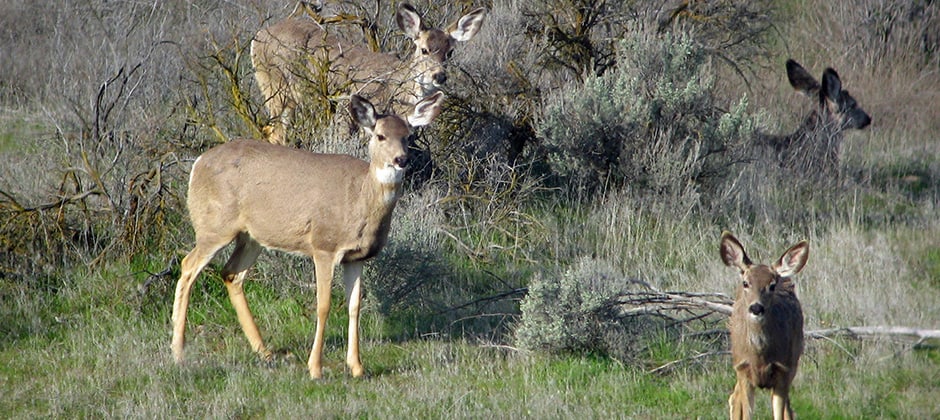Share this article
Wildlife forensics unveil predator-prey interaction clues
A single piece of evidence may not solve a crime, but put together lots of pieces and investigators can paint an entire picture of a crime scene.
That’s not so different from wildlife biologists looking at the remains of an animal and trying to figure out what species preyed on it, said TWS member Taylor Ganz.
“No single clue can reveal the cause of death, but collectively, we can piece together a story of what happened,” said Ganz, a PhD student at the University of Washington.
In her research titled “Wildlife Whodunit: Forensic Identification of Predators to Improve Wildlife Conservation,” which she presented at the 2019 annual TWS conference in Reno, Nevada, Ganz and her colleagues reviewed carnivore tracks, scat, lethal bite marks on prey and patterns of prey consumption from 2017 to 2019 in northern Washington state.
They compared their inferences from these signs to genetic evidence collected from the scene, including saliva left on fatal wounds of predated white-tailed deer (Odocoileus virginianus), mule deer (Odocoileus hemionus) and Rocky Mountain elk (Cervus elaphus nelsoni) as well as saliva left on their collars.
Past unrelated research on Canada lynx (Lynx canadensis) has looked at how genetic information from saliva was retained and stored on collars and ear tags, but Ganz and her team wanted to determine how likely it was to make mistakes when identifying which predators, such as cougars (Puma concolor), wolves (Canis lupus), bobcats (Lynx rufus) or coyotes (Canis latrans), killed cervids in different stages of life. In the Canada lynx research, it was often difficult to recover a carcass of something like a snowshoe hare (Lepus americanus), which also ended up being the case with fawns.
“When the fawns do get killed by a predator, they tend to be well consumed, which is certainly a challenge for us,” she said.
Ganz and her colleagues determined that of the prey they were studying, there were at least 89 mortalities, 40 of which were confirmed to be predations. They only considered prey that had clear signs of hemorrhaging associated with predator bites, or clear signs of struggle before death. Field crews also took samples and swabbed bite marks on the animals for genetic evidence.
“It was really interesting,” Ganz said. “We found when we were using the genetic evidence, there was a 30% improvement in our inference.”
Ganz said this is due to field misidentification using the traditional methods, or kills that cannot be classified by traditional methods alone. While they found younger animals, with less of a carcass to look for signs from, had more misidentifications, inference from adult mortalities also improved with the genetics.
“It was really satisfying when we knew there was a predator and couldn’t identify which species it was in the field, but we could identify it in the lab,” she said. “There’s quite a bit of value using this genetic evidence across predator species.”
Ganz said using the two methods together provides the best data. And she also said it’s important to consider the context when using genetic evidence. For example, scavengers may contaminate the genetic data of a depredated animal if researchers aren’t careful.
This research is part of a longer term research project looking at dynamics of wolves, cougars, bobcats and coyotes and their prey of white-tailed deer, mule deer and elk. The next step, Ganz said, is getting a bigger sample size for this study and then using larger findings of deer and elk mortality to understand what those populations are sensitive to.
Header Image: Researchers used genetics and traditional methods to determine what carnivores killed mule deer, like the one above, white-tailed deer and elk. ©Greg Schechter








